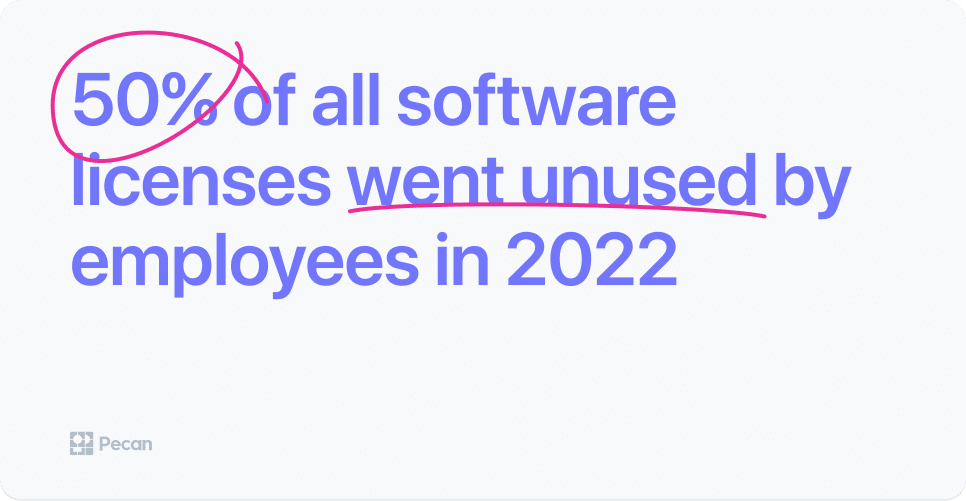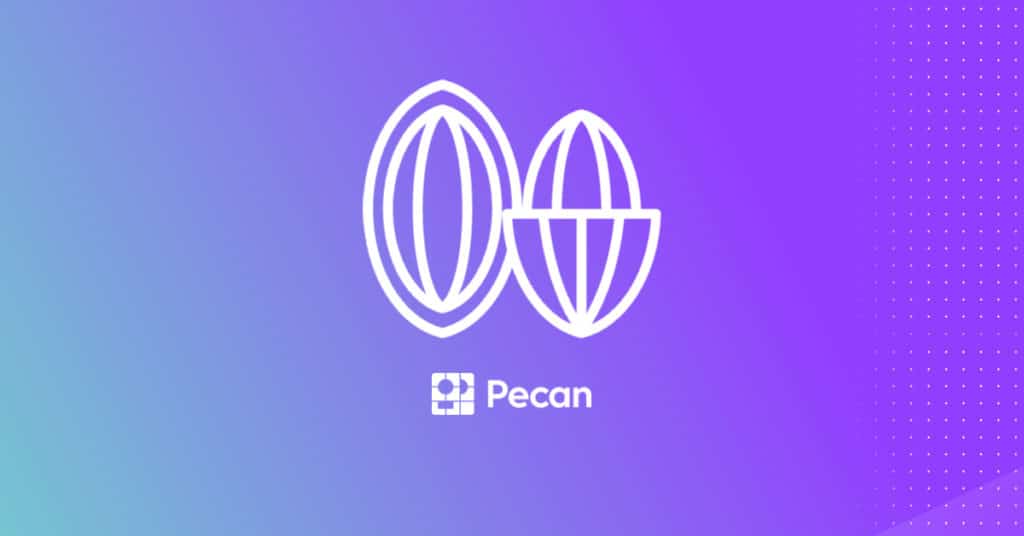In a nutshell:
- Building a data-driven culture requires more than just repeating the phrase.
- Data analysts can lead the charge by setting a clear vision and identifying leaders' KPIs.
- Providing the right tools and resources is crucial for success.
- Foster a culture of experimentation and learning by using predictive analytics.
- Start taking actionable steps towards building a data-driven culture now.
The idea of building a “data-driven culture” isn’t new. But if your company regularly repeats those magic words without taking any concrete action, it may not fully appreciate data’s importance or understand its potential impact on your organization.
A data-driven culture is the difference between making decisions based on assumptions and based on facts. This may be reflected in the way your company performs market analysis, allocates ad spend, and develops product features.
If you’re a data analyst, you’re well aware that a data-driven approach will help your organization make smarter decisions, optimize processes, better understand your customers, gain a competitive advantage, and much more.
But you also know that building such a culture requires a clear vision, supportive leadership, and a unified effort to transform employees' thinking, actions, and decisions. You won’t have much luck if you act alone.
Adding to this challenge is that most expert guidance on this topic focuses on how leaders can pursue this strategic initiative. What we want to explore—and share with you—is how everyday data analysts can leverage their position within a company to help foster a data-driven culture.
-

- What analysts can do to support a data-driven culture
ChatGPT’s recommendations for building a data-driven culture
To give this article a unique twist, we started by asking ChatGPT the following question: “What are the top 4 ways a company can build a data-driven culture?”
As you might expect, the answers were quite generic and not particularly actionable. So, as we share the answers with you, we’ll present our own take on them – so you can turn high-level ideas into action.
1. Set a clear vision
What ChatGPT had to say: Establish a clear and compelling vision for how data can transform the company's operations and performance. Communicate the vision effectively to employees, customers, and stakeholders. Show how data can improve decision-making, enable innovation, and drive business growth.
Our take on it: This makes sense, but how many data analysts have the time in their day-to-day work to develop a “vision,” let alone the power to communicate and implement it within their organization? What are some reasonable, concrete steps they can actually take to act on these recommendations?
One practical approach is to start with a smaller set of goals (to be fancy, we can call it a “vision”) that, with success, can trickle up. You can get started by learning about predictive analytics, finding relevant examples for your organization, and exploring potential use cases that you can share with your team.
Let’s say you find out that a company in your industry has used predictive analytics to double its conversion rate, and all it required was the use of raw historical sales and customer data. Or you discover that a competitor slashed customer churn by 11% within three months of adopting a predictive analytics solution.
There are plenty of use cases out there. The key is to find one that resonates with your leadership and then lay out a clear business case for it. Do this well, and your seed of an idea will grow into a true strategic vision that your organization can adopt and expand upon.
Of course, you’ll first need to deeply understand how your company operates and the field it operates in. This will help you identify significant opportunities for improvement, whether in the form of increased revenue, reduced expenses, or optimized processes.
Knowing more about your company and its processes will put you in a better position to explore all the different ways predictive analytics can create a meaningful impact.
2. Lead from the top
What ChatGPT had to say: Ensure the senior leadership team is committed to building a data-driven culture. Leaders should actively champion the use of data, make data-driven decisions themselves, and set an example for the rest of the organization.
Our take on it: Sounds great, but the obvious question is, “How can a data analyst lead from the top?”
No matter how persuasive you are, turning leaders into data champions is easier said than done. Building a data-driven culture is not top-of-mind for many leaders, and it’s typically for one or more of these reasons:
- Inadequate understanding of the value of data, and how it can be used to drive business decisions and provide insights into customer behavior, market trends, and other factors that drive business success.
- Having to manage more immediate or high-stakes priorities such as finances, operations, and developing new products or services.
- Being exposed to so much data that they feel overwhelmed or unsure of how to analyze and make use of it all.
- Hesitation to rely on data to make decisions, often due to a lack of trust in the accuracy or relevance of the data that’s available.
So what’s the key to bringing them on board? Start by identifying relevant leaders’ most important KPIs (key performance indicators), and then show how predictive analytics can address them.
Their KPIs will vary widely depending on your company and industry, but will typically include metrics like revenue, profit margin, customer acquisition cost, customer retention, user onboarding and engagement, marketing campaign performance, inventory turnover, and more.
If you really want to do your homework, schedule an interview with a leader – or one of their team members – who can answer questions like:
- How much money would our company save if we reduced customer churn by 10%?
- What is our average customer acquisition cost for each marketing channel?
- How much would we need to boost conversion in order to hit our revenue growth targets?
Once you have some key information and can identify an appropriate use case (like churn reduction or upsell/cross-sell), you can show these leaders how predictive analytics will help them make data-driven decisions.
They can stop relying on inaccurate assumptions and gut feelings, and start enjoying improved business performance – plus the personal and career benefits that accompany those achievements.
Focus on addressing their KPIs and you’ll soon turn leaders into your strongest advocates.
3. Provide the right tools and resources
What ChatGPT had to say: Provide employees with the tools and resources they need to access, analyze, and act on data. This includes investing in technology infrastructure, data visualization tools, and training programs that help employees build the necessary skills to work with data effectively.
Our take on it: There’s no doubt about it. Employees will require the appropriate tools and resources to participate in a data-driven culture. Without those, your vision is as good as gone.
But if they’re expected to use tools that are too complicated or aren’t right for them (if they even use them at all), they’ll experience an increase in frustration and resistance, and a reduction in productivity.
This might explain why, according to a recent study by Nextthink, 50% of all software licenses went unused by employees in 2022.
So how can you turn this high-level idea into action?
As you envision a data-driven culture, you’ll want to answer two questions: 1) What technology is required to achieve your vision? 2) Who needs to use it?
With thousands of data software solutions on the market, these questions don’t get any easier.
To narrow the field, you’ll want to look for:
- A tool that’s custom-built for your desired strategy and connects to your existing tech stack.
- A solution whose value can be understood by a variety of team members – not just by specialized data scientists and engineers – and can even be used by them.
- An out-of-the-box platform that incorporates a range of required functionalities, such as data preparation, data analytics, and data visualization. In the case of predictive analytics, this would also include AutoML (automated machine learning).
-

- If they don’t wanna use it…they won’t.
Following these guidelines will increase your odds of organizational buy-in and employee adoption. And we’re not just talking about a specific tool but about your entire data-driven initiative.
If predictive analytics is your path toward building a data-driven culture, you’ll want a solution that combines everything you need in an integrated, easy-to-use platform.
Low-code tools like Pecan make predictive analytics available to any organization, without requiring you to invest in highly trained data scientists or in complex software that can be used by only a handful of people.
Using Pecan and our Predictive GenAI capabilities, any data analyst or data-oriented business professional can quickly connect and combine their data, customize machine-learning models to fit their business KPIs, and integrate predictions directly into existing business systems so relevant stakeholders can take immediate action.
4. Foster a culture of experimentation and learning
What ChatGPT had to say: Encourage employees to experiment with data and learn from their successes and failures. Create an environment where it is safe to take risks, test hypotheses, and iterate quickly. Celebrate and reward employees who demonstrate a commitment to data-driven decision-making.
Our take on it: By definition, your work culture depends on the attitudes and behaviors of your colleagues. So it’s only natural that a successful data-driven culture is one where they’re comfortable working with data, are able to learn quickly, and are able to do so without fear of making mistakes.
But how is that accomplished?
That’s the beauty of predictive analytics. It’s the most powerful method for testing hypotheses and learning quickly, as it analyzes historical data to identify patterns and trends.
There’s no need to wait for and perform tests on future data. You can test a hypothesis on the spot, and learn from past data in as little time as it takes a machine-learning algorithm to process it.
A predictive analytics platform can make it easy to analyze large volumes of data from different sources, so almost anyone – not just data scientists – can identify patterns and insights in your data that aren’t detectable through traditional methods.
The platform does the heavy lifting, and any business stakeholder can use the resulting insights to predict future outcomes. In other words, you can quickly and easily make sense of large volumes of data, generate and test hypotheses, and make data-driven decisions with speed and accuracy. And with a solution like Pecan, you can easily monitor and adjust the performance of your predictive models.
Adopting a predictive analytics platform will provide you and your colleagues with a tremendous growth opportunity—not just by acquiring new skills in predictive modeling but also by adding greater value to your organization.
Ready to lead by example? Choose your predictive AI use case, pursue a defined KPI with a well-established timeline, and share your accomplishments with others around you. Then encourage and inspire them to learn and experiment alongside you.
Wrapping up
It’s entirely possible to leverage your position within your organization to promote a culture that uses data to make better decisions and improve its bottom line (even if ChatGPT only has ideas for leaders).
In short, you can get started by:
- Setting a smaller vision and building a business case in support of it
- Identifying your leaders’ most important KPIs and showing how predictive analytics can address them
- Choosing tools that can be understood and used by your colleagues
- Using predictive analytics to learn and iterate quickly
Follow these steps and you’ll be well on your way to building a data-driven culture, creating meaningful impact in your role, and turning leaders into data champions.
Get started with your progress toward a data-driven culture now. Sign up for a free trial now and try it yourself, or let us give you a demo!




